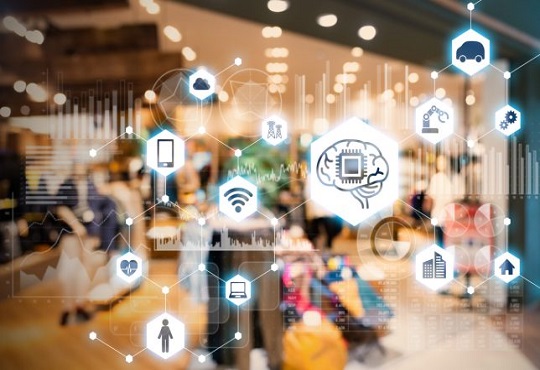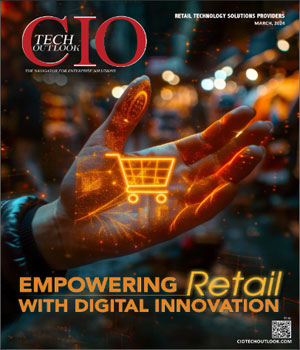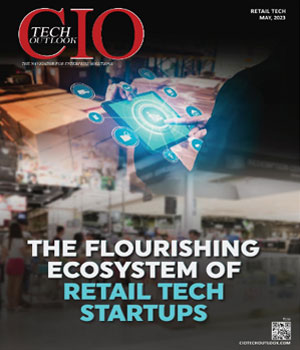
Top three retail technology trends of 2023
Janifha Evangeline | Monday, 09 January 2023, 03:02 IST

Over the past decade, the retail industry has undergone tremendous transformation as prominent retail brands have invested largely in digital transformation that is underpinned by cloud computing advances & widespread acceptance of e-commerce. The COVID-19 pandemic & the subsequent reopening of the economy has further augmented the transitions that are driven by changing customer expectations as well as non-traditional demands of Millennial & Gen Z clients. However, retailers do not have any option, other than to continue investing in new technologies and stay ahead of the curve.
Let us look at the top three emerging retail technology trends that retailers should evaluate in 2023.
Contactless stores
Contactless stores include a suite of technologies & customer experiences which retail chains are implementing to reduce friction or even delays that are experienced by customers at several touch points & minimize human contact in the complete buying experience.
Technologies & processes that enable a contactless buying experience comprise e-commerce, mobile wallets, NFC-based payment cards, buy online & pick-up in-store, self-service checkout kiosks, & cashier-less checkout experiences like Amazon's Just Walk Out. Some of the key factors driving the adoption of the contactless stores include:
While e-commerce, contactless buying experience are not new, the pandemic has augmented the roll-out of contactless technologies as well as delivery models as customers and retailers pivoted to overcome social distancing norms & safety concerns.
As per Visa, tap-to-pay transactions in daily segments in the United States, including grocery as well as pharmacy, have grown more than a hundred per cent over the last year. Thirty million Americans tapped a Visa contactless card or even digital wallet in March 2020, that is up from twenty-five million in November, with overall contactless usage in the United States growing one hundred and fifty per cent since March 2019.
According to Square, "Mobile wallets have accelerated in popularity due to the low or no-touch interactions customers can make in order to complete transactions. And for businesses, the tap-to-pay technology can reduce wait times at check-out.”
According to another report by eMarketer it was estimated that BOPIS sales revenue in the United States grew 107 percent in 2020 & will continue to grow upwards of fifteen per cent till 2024.
Technology implications of using contactless stores for retailers
Retailers should be reviewing LAN/WAN/Wi-Fi capabilities, bandwidth availability, network security & security camera coverage at the store on the basis of the extent as well as scope of contactless store implementation. The stores that are left or running without any cashiers require a bevy of technologies in order to work together. AI-enabled cameras, Computer vision, microphones, RFID strips, infrared lead sensors, & mobile apps work together for rendering the convenience of walking in and leaving the store even without checking out.
POS system may need an upgrade to render additional payment options & integrating POS with sensors. In some of the implementations like Amazon's Just Walk Out, the POS concept, may not even exist as the virtual shopping cart will be updated in real-time since the clients add item into the basket.
“Self-checkout, digital wallets, as well as BOPIS require a recalibrated approach to loss prevention to address theft and online frauds. According to Visa “Unlike conventional online orders, a BOPIS transaction may contain less information to leverage in assessing the risk of the order (for example, a BOPIS order may not contain a shipping address). Unlike conventional in-store transactions, a BOPIS transaction doesn’t benefit from the secure capture of the payment, like chip-on-chip or tap-to-pay methods.”
AI-enabled security cameras
AI-enabled security cameras can increase the effectiveness of remote video monitoring. Security operations that are into monitoring the feeds can obtain real-time alerts while the camera detects any of the anomalies the Artificial Intelligence program is trained for and hence allowing security teams to act before a crime is committed.
AI-enabled security cameras systems render a searchable footage library which makes it very easy to quickly find footage of relevance as well as doing away with the required sift through hours of recorded footage during investigations. However, Advanced AI-enabled security cameras have deep learning capability & can stay progressively good at recognizing patterns & finding out anomalies in the video being recorded.
Retail video analytics
Although retail video analytics is a new category of retail applications relatively which utilizes leverages technologies like computer vision & AI for capturing real-time information from security camera footage, several retail chains have installed security cameras at all their shops and these cameras record important information which can be used for gaining valuable operational insights regarding retail operations & customer behavior inside the store.
According to PwC, “Success at the shelf is no longer about the depth and breadth of inventory, but rather creating engaging experiences for customers. And it is about building engaging CX calls for real-time access to customer behavior data in the context of the store design or layout, time, & a slew of external contextual factors.”
Technology implications of retail video analytics
The first and foremost sensor to gather data from a video is the security camera. These are installed with loss prevention as the first use case & the installed cameras will not necessarily meet the data gathering requirements for a video analytics project. However, upgrades of cameras as well as new installations would become a necessity.
Video analytics solutions can keep track of not just customer movement, but also product interactions, & behavior within the store. When it is used in conjunction with AI-enabled cameras with facial recognition capabilities, retailers can also run the risk of violating customer privacy.
The road ahead
Forrester has identified segmenting & clustering, demand management, inventory planning as well as operational effectiveness & agile merchandising as some of the core features to be evaluated while choosing a retail demand planning application among the numerous critical features which are required in a retail demand planning platform.
CIO Viewpoint
Paving the Way for Technology First Retail
By Abhrasnata Das
Predictive Analytics In Supply Chain Management
By Ajay Yadav, Head It (North), Arshiya Rail Infrastructure
Never Let The Good Crises Go Into Waste,...
By Ashok Jade, CIO, Shalimar Paints
CXO Insights
Maneuvering the Digital Transformation in Retail
By Janifha Evangeline
Smart Retail Converting Shop Visitors To Customers
By Dr. Dinesh Chandrasekar, VP, Chief Solutions & Innovation Head, Pactera
Importance Of Differentiated Customer Experience




.jpg)


.jpg)
.jpg)




